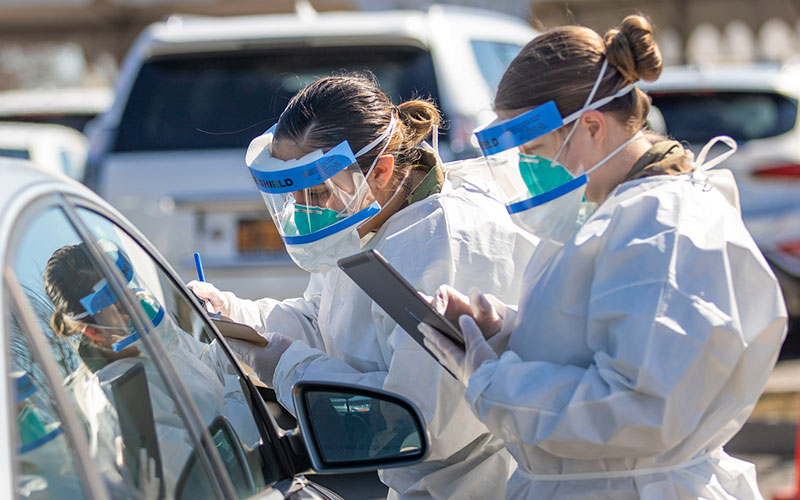Hogans offer solution to veterans’ housing crisis
Navajo Times
By Arlyssa Becenti | Aug 6, 2020
WINDOW ROCK
The idea of a modern hogan, or octagon, being built to ease the housing shortage on the Navajo Nation has only been an idea that has been touted – until now.
Inside a warehouse in Tse Bonito, Navajo Veterans Administration director Jim Zwierlein is helping to build the prototype of a 1,236-square-foot modern hogan, which has two bedrooms, a kitchen, and a full ADA-accessible restroom. “The homes are being designed with energy efficiency in mind,” said Zwierlein.
This first home, if all goes well, will be headed to Tuba City. The homes will be given to homeless Navajo veterans who meet qualifications. Right now there are over 1,000 applications from veterans in need of a home and Zwierlein and the president of the Navajo Nation believe this modern hogan will be the answer.
“If they all are qualified, meaning they are legitimate veterans and they are in fact homeless, and not possessing a second home on Navajo, off Navajo or anywhere else, then they would receive a home in our program,” said Zwierlein. “We hope that we will be able to do 150 veterans homes by end of the year.”
The vision for the homes doesn’t stop with veterans. The Housing Improvement Program under the Division of Community Development could use this modern hogan plan for non-veterans as well. A fund management plan is also being developed for people who decide to buy the home. “This is going to be the start to the larger proposal for the housing manufacturing facility,” said the president. “This is what we envisioned at the beginning and to see it now is pretty awesome.”
The president of the Navajo Nation said this type of home manufacturing was something he had wanted to see when he was still vice president, but there had never been follow-through on it until Zwierlein was given the task. About a year ago, designer Dan Nakai came to the president's office to show the three house designs he had drawn up. For simplicity, the president said this current design was the best one. The design allows for walls to be taken off in order for the homeowners to add on to the structure whenever or if ever they choose.
“With a simple octagon like this you can knock down a wall and add on more to the house if you want,” said the president. “Once they learn how to do it they can do it themselves and this is the sweat equity part about it.”
This project will also provide jobs for veterans to build these homes. Within the construction contracts there is a provision stating the contractor has to recruit veteran labor forces, and if the veterans are able and willing they can be hired. Prior experience in construction or home building isn’t required.
In order to begin building these homes for the Navajo VA, Zwierlein said he’s waiting on the Navajo Nation Council to correct the Veterans Housing Program bill. The original bill stipulates that only Navajos can be hired for the program, and there was a dollar limit on the value of the homes. “In today’s market the costs that were set seven years ago are no longer valid,” said Zwierlein. “Home construction is more expensive.
Once they take it for action and pass it through we’ll have the green light to start building.” The cost for the prototype added up to $65,000 to $70,000, plus the cost of labor and transportation to move the home to the site. Along with concrete to build the foundation, this two-bedroom home will cost up to $130,000. The veterans’ homes are being paid for out of the veterans’ trust fund.
“In the last administration Jim and I talked … he pitched this idea and it was always on my mind,” said the president. “We had a new opportunity now since we have a new administration. Look at what we have right now. Once these homes are being built people will be happy. “During the campaign,” he said, “we asked ‘how many of you would be content with a simple octagon?’ A lot of people said they would.”

